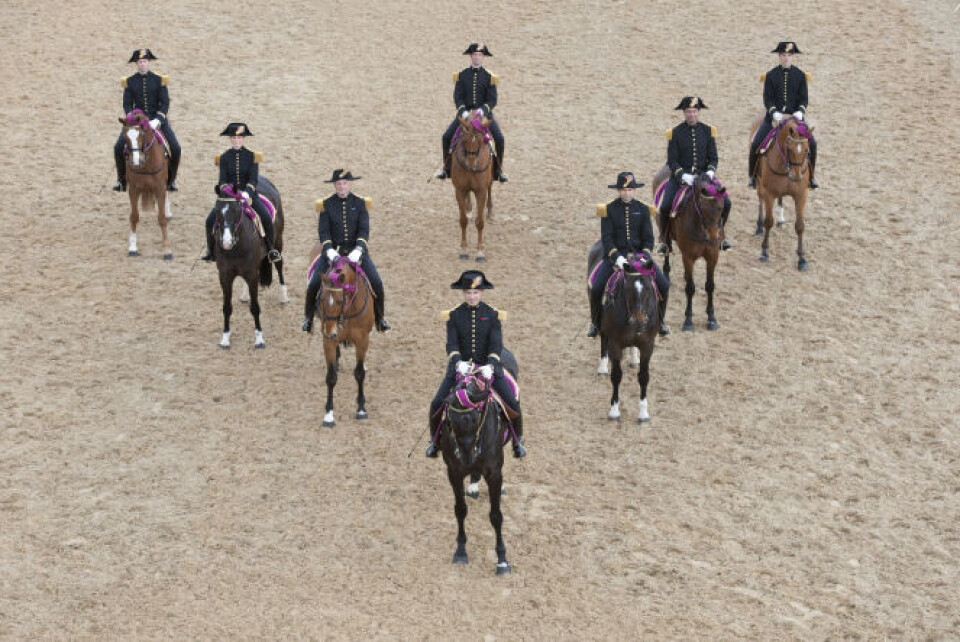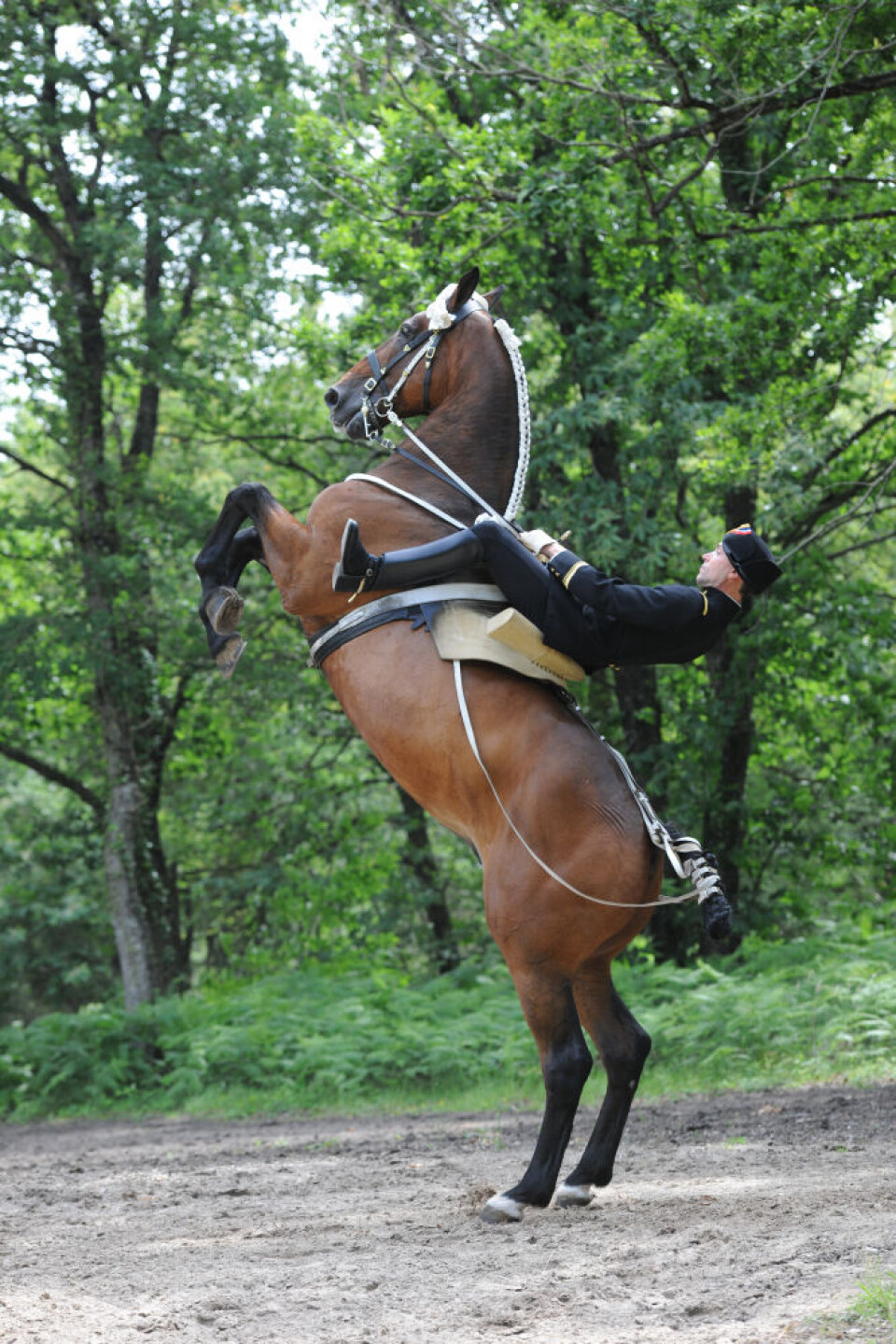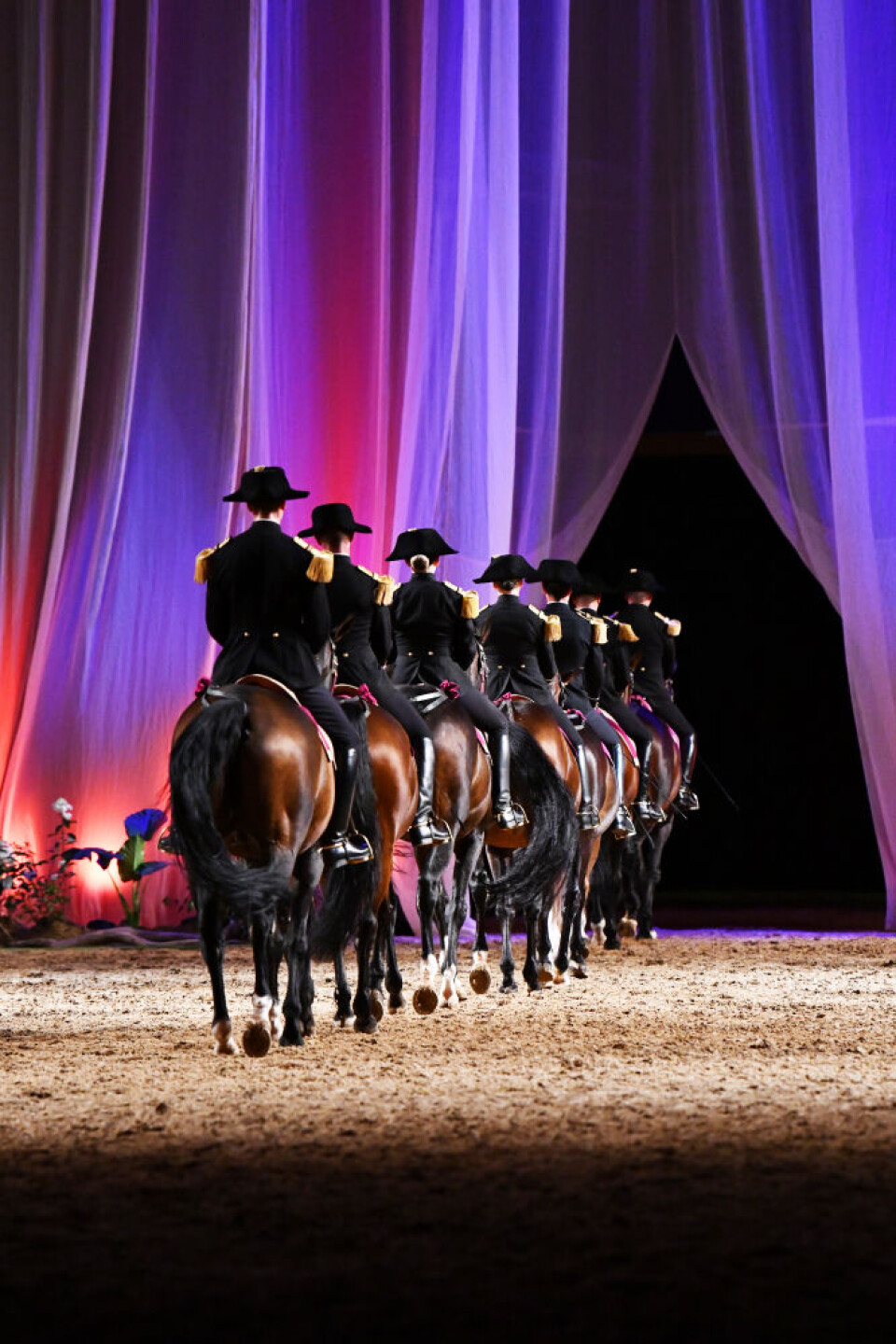-
Duck Cold! Four French phrases to use when it is freezing outside
We remind you of French expressions to use to describe the drop in temperature
-
When and why do we say le moral dans les chaussettes?
We explore this useful expression that describes low spirits
-
France’s proposed voluntary national service: military revival or costly misstep?
Concerns have emerged over scheme's potential overlap with the recently abandoned Service national universel
Cadre Noir de Saumur: Discover France’s unique style of horse riding
Recognised by Unesco as an intangible cultural heritage, this technique of riding requires intensive training both for the rider and horse

The écuyers of Le Cadre noir de Saumur in Saint-Hilaire-Saint-Florent, Pays de la Loire, are simply put, the crème de la crème. They are quite simply the best.
They are so good that 10 years ago Unesco inscribed Le Cadre noir on the list of intangible cultural heritage of humanity, for horse riding ‘in the French tradition’.
It is a tradition that has been honed over the centuries with Le Cadre noir’s journey starting after the Napoleonic wars when the French cavalry was decimated.
While tragic, it highlighted the need for more training and as a result there was a restructure within the cavalry.
In 1815, Louis XVIII created the Ecole des Troupes à cheval.
Not to be confused with the other military schools in Saumur, this one was opened solely to ensure the best instructors would train officers and horses for the cavalry corps.
These teachers were great riders from Manèges of Versailles, the Tuileries and Saint-Germain, hired into the military, referring to teachings from the masters Antoine de Pluvinel, François Robichon de la Guérinière and François Baucher.
Charles X renamed it the Ecole royale de cavalerie in 1825 and just a few years later the first carousel was presented with the écuyers wearing the ‘bicorn’ hats.
At the start of the 20th century, the school was particularly interested in equestrian competitions introduced at the Olympic Games and the écuyers of Saumur competed in three categories; show jumping, dressage and eventing. Overall, Le Cadre noir has won nine Olympic medals (seven gold, one silver and one bronze).

Training of the écuyers of the Cadre Noir during a gala. Pic: Benoit Lemaire / IFCE
During World War One the écuyers were dispersed across different units and when the school and the Manège re-opened in 1919, they revealed a new, instantly recognisable uniform, one that inspired the name ‘Le Cadre noir’.
The black tunic with nine golden buttons, black trousers, black boots and a hat (men wear the kepi and the females wear the bicorn) has become synonymous with the riders.
World War Two again saw troops mobilised and the school was split in two. The Manège was retained as the École nationale d’équitation under the responsibility of the sports commission and other buildings were used for war purposes.
Léa Bury-Pennachio, a guide at Le Cadre noir de Saumur, explained: “Of course, when the military revolution introduced tanks and planes you didn’t need the horses. If you don’t need the horses and the riders, you don’t really need the teachers anymore. Le Cadre noir at this time was there for show.”
The question of the organisation’s existence was raised. Although after a recognised history and growth in knowledge, the government could not dispose of such an important legacy.
On the periphery there was an increase in equestrian centres and riding for pleasure was trendy. “This is when the mindset of people changed about the use of the horses. It was not only about using the horse for war or to work on the field, but to use them for sport and leisure,” continued Léa.
In 1972, the École nationale d’équitation was created and Le Cadre noir joined them as instructors, with their main objective being to train horse riding teachers.
The merge shifted Le Cadre noir from Military status to civilian and the school put more emphasis on preparing for state diplomas in the teaching of horse riding and the development of high-level sport.

An écuyer du Cadre noir demonstrates the Courbette. Pic: Benoit Lemaire / IFCE
The École nationale d’équitation merged with Haras nationaux in 2010 and became the Institut français du cheval et de l’équitation (IFCE).
To guarantee the heritage and tradition of Le Cadre noir continues, the military is present within the institution. The ‘écuyers en chef’ always comes from the military corps, currently Colonel Patrick Teisserenc is at the helm, and there are also six military riders among the écuyers.
The only way to tell the difference is by the stripes on their tunics and the insignia on their hat. A small golden sun for civilian écuyers and a grenade for the military écuyers.
An écuyer is an elite position that naturally comes with a certain number of requirements. For example, you need to be less than 35 years old, have an instructor’s degree, experience in teaching and must have competed on an international level. An application would also include a letter to say why you are right for the role.
Today, there are 33 écuyers – compared to 10 during the organisation’s first decade – three of which are women (this will increase to four in September) and all instructors at the riding school are members of Le Cadre noir. However, for anyone wishing to apply, vacancies are rare as an écuyer can work into retirement.
Their day can start at 7:00, taking care of five to seven horses and they must ride 45 minutes to an hour per day, every day. All the écuyers have students and their role is to pass on their theoretical and practical knowledge.
The number of horses and students an écuyer looks after depends on their age.
The teachings are a mix of several theories practised over time, with all of them focusing on establishing a harmonious relationship between man and horse.
“The students will be the next teachers. They will be trainers in equestrian centres, trainers for competitions or instructors,” said Léa.
One of the school’s most famous instructors, General Alexis L’Hotte, combined the principles of François Baucher and the Count d’Aure and created the ‘calme, en avant et droit’ doctrine.
“It is the foundation of French riding. It is basically the idea of being one with your horse, light and moving forward,” Léa continued. “When you look at the rider and the horse, you are not supposed to see a lot of movement from the rider. You have actions from the rider because the horse will not gallop by himself, but you are not supposed to see much, and they’re supposed to be one with the horse.”

Le Cadre Noir performing in the Grand Manège. Pic: Benoit Lemaire / IFCE
The school itself is impressive and pre-pandemic, it welcomed 100,000 visitors per year from all over the world.
Totalling at around 300 hectares, there is a veterinary clinic, farriers based onsite, an amphitheatre, modern media library and stables, as well as seven indoor schools and 18 Olympic-sized outdoor areas with special surfaces.
The galas are famous, where you can see the écuyers of Le Cadre Noir performing in the Grand Manège and tours allow you to visit the stables and tack rooms.
There is also a research centre with a team focused on ensuring the horses are in the best condition, both mentally and physically.
The 350 horses at the school are, of course, well looked after. The school owns 270 and the remainder belongs to the écuyers or students.
A horse is selected by its genes, breed – which could be one of three; French Saddle Horses (Selle Français), Anglo-Arabians and Hanoverian horses (German breed) – physiology and morphology. Around 10 to 15 new horses are bought each year at three years old.
After which, each horse will spend time with three or four écuyers for a range of training and disciplines, until they reach six or seven when they begin their role, working with students and performing.
A horse will remain with the same écuyers and grooms during its career at the school and when it is time for them to retire at around 15 to 20 years old, they can be bought.
The new owner must sign a contract stating that the horse will not be used for breeding, especially the mares, or competing and the horse cannot be sold.
Léa added: “If we buy 10 horses in one year, we will put 10 horses to retirement.
We want the same horses with the same people, this way they are not disturbed and are comfortable. We want the same thing for their retirement. It is not a question of money. We just want them to be in a family who wants them and will keep them until the end. The horses spend a lot of time here. They give us a lot during 15 years, so I think it’s important for us to give them a good retirement.”
Le Cadre noir de Saumur,
Avenue de l’École Nationale d’Équitation, 49400 Saint-Hilaire-Saint-Florent
Related articles
Meet the artist behind France’s new Napoleon commemorative sculpture
























